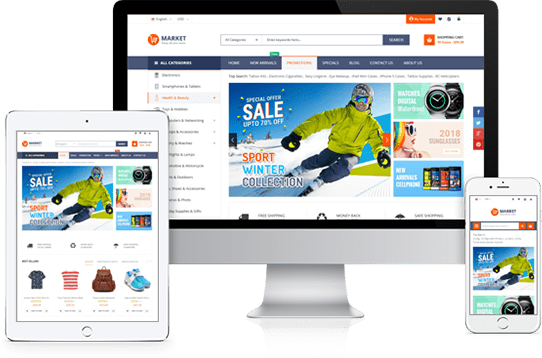The advent of sophisticated technologies has transformed the global business landscape. Here are some notable facts for your consideration.
Regardless of its size and growth capacity, every online business designs its operations to bring in generous and long-term dividends. E-commerce has influence consumer behaviour. People now mostly resort to e-commerce stores to satisfy their shopping needs.
The growth of e-commerce is unstoppable, evidently there are self-explanatory reasons for that. Research confirms it is estimated that 95% of all purchases will be through e-commerce by 2040.
It is also imperative to note how many e-commerce websites exist in the market. If poorly laid-out, consumers usually switch or leave the online store without making any purchases. It is very important to keep the customers engaged or risk losing a potential sales.
These dominant worries stress on a technically-enhanced and robust e-commerce website design.
It is also a fact that many e-commerce websites are hooking their customers onto giving them more money, all for their optimized website design. E-commerce growth is critically dependent on user experience, which can only be achieved when a technically-capable team understands critical principles.
An e-commerce website demands a very informative website design, and the process itself involves a well-designed strategy, both from a developer and a marketer’s point of view. It is essential to ensure these factors are considered in the web design process for users to jump through the hoops:
1.Easy to Use Web Design
When browsing an e-commerce website, either on mobile or desktop, an average user will only take three seconds to decide whether they want to engage further or leave.
A website must have an easy-to-use, but, still very informative website design; the only factor the user will consider to form the first impression of the store.
The visibility and usability of an e-commerce website can simply attract and retain users. A simple website layout is considered a focal point. Simple but effective design can turn the website into a powerful seller.
2. Load Time
A three-second attention span is very low; you may lose 40% of your shoppers and the potential e-commerce growth. unresponsive websites are slow and can cause a lot of loss. Hence the focus should be on a design that will load quickly. It not only impacts the user’s experience, but also decreases the chances of ranking high on search engines.
3. Check-Out Process
It is a standard user practice that can bring irreversible loss if the factor isn’t considered. Research attests that an estimated 60% of users abandon their shopping carts because of complicated or lengthy check-out and payment processes. It should be solved by designing a comfortable, one-page check-out process. Most e-commerce websites have an integrated account set-up system, which should be completed the first time a user interacts with the e-commerce website.
4. Searching & Product Categories
With a well-designed website, the process of searching for products is made easy. When users aren’t offered customized customer experience, they can very quickly leave the website. If managed properly, the search engine will be able to rank your website higher in organic searches. Likewise, the carefully-informed product catalog will allow users to browse without extra load and browsing time.
5. Recent Views
To give users a useful customer service experience, simplifying most e-commerce website elements should be a key priority. When users can see the recently viewed or similar products on your website, they are likely to choose products and convert them. Hence a website with a smooth internal linking system can help navigate users to search history.
6. Mobile Responsive Design
With mobiles as necessities, it is a known fact that 55% or more people choose to shop from their mobile devices than their laptops or tablets. Therefore, the designed website must be optimized for mobile; it should be hybrid, or in simpler terms, responsive. One of the most critical features of responsiveness is easy-changeability; the e-commerce website will feel more engaging.
7. Website Sharing
It is vital to enable social sharing of your e-commerce website to increase reach and traffic. Mostly potential customers redirect from social platforms to online stores. Many social platforms refer shoppers to direct sites. Statistics reveal that 77% of customers are acquired through social media platforms, e-commerce websites, mainly referred by Pinterest, are 10%.
8. Seller Information/Reviews
Unarguably the most talked-about fact: 50% of online buyers always read detailed reviews and search for high demand sellers on e-commerce stores. Although an already built feature on the website, a review page has to be optimized effectively for better search rankings. It has to be in a safe distance from the product description box.
Besides, the visibility of the seller’s information and contact details also is critical. Giving easy access and better customer experience to users is very crucial for more business with them. Hence the information’s visibility should be a design focus too.
Conclusion
It is essential to consider the most crucial dynamics of informative website design as it can seemingly make or break the long-term growth plans. The Designs Zone teams technically capable web developers to optimize e-commerce platforms by focusing on the critical web design element.

As the editor of the blog, She curate insightful content that sparks curiosity and fosters learning. With a passion for storytelling and a keen eye for detail, she strive to bring diverse perspectives and engaging narratives to readers, ensuring every piece informs, inspires, and enriches.










